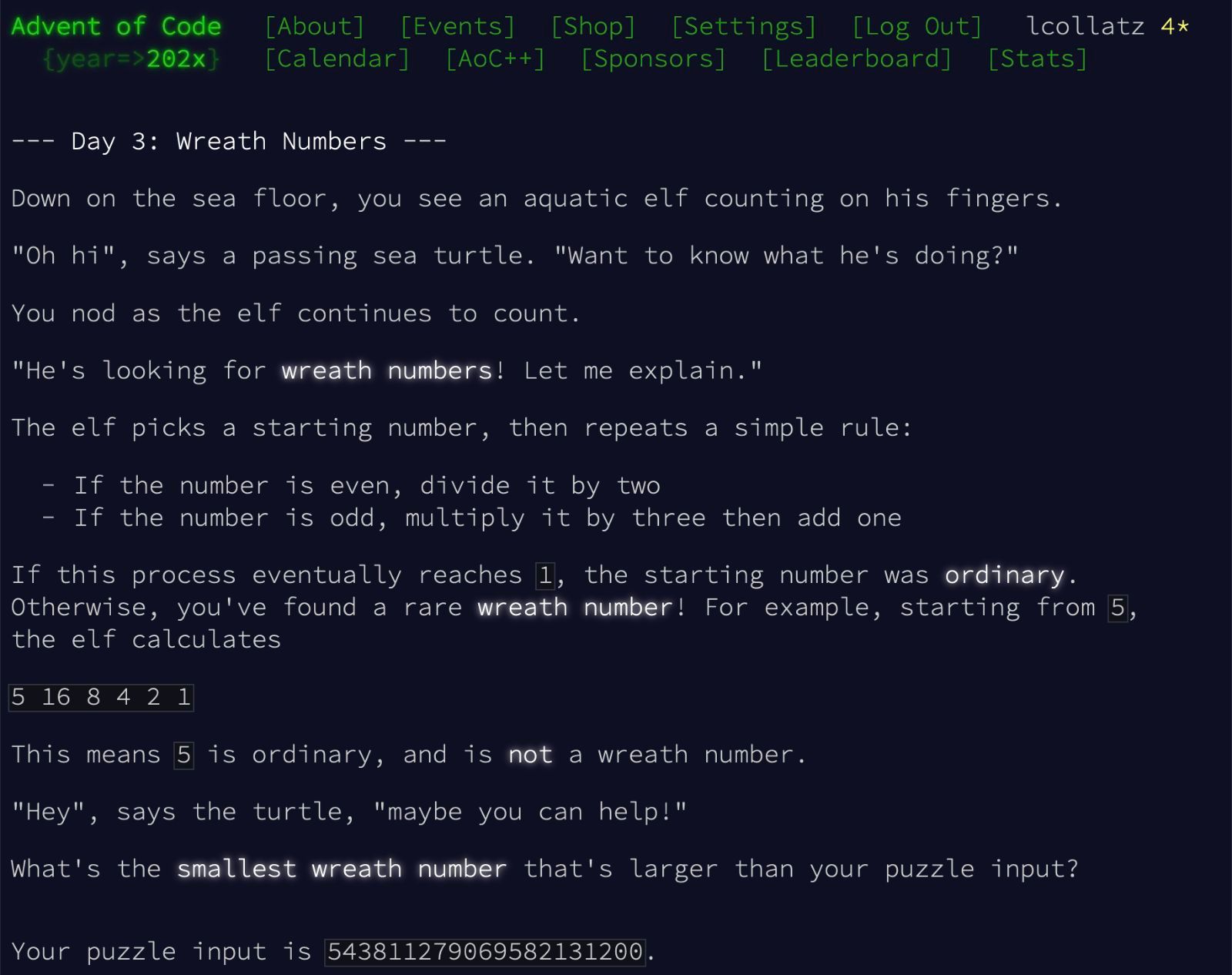Every December, I help Santa and his elves save Christmas by working through Eric Wastl's Advent of Code, an extremely popular Advent calendar made up of programming challenges. Tens of thousands of people solve these challenges each year, motivated by the global leaderboard or a desire to learn a new programming language or even to prep for job interviews. Some coders livestream while solving their challenges, and others share incredibly creative solutions. One year, a coder solved all his challenges using only Excel!
With each passing day, the challenges increase in difficulty. As a joke, one Redditor recently "complained" that this year's challenges were harder than previous years and posted this fake challenge for Day 3:

At first glance, this seems like a standard Advent of Code challenge. However, this is actually a well-known unsolved problem, the Collatz conjecture. Most mathematicians believe that no such "wreath number" actually exists!
Normally, I'd turn this post into an ELI5 on the Collatz conjecture, but Veritasium did a great explanation of the conjecture earlier this year, and I don't think I could do better. Here it is:
It'd be pretty funny if Advent of Code could ever overlap with April Fools' Day. This would be perfect. I'm just glad that I recognized the challenge as a joke before attempting to program its solution!